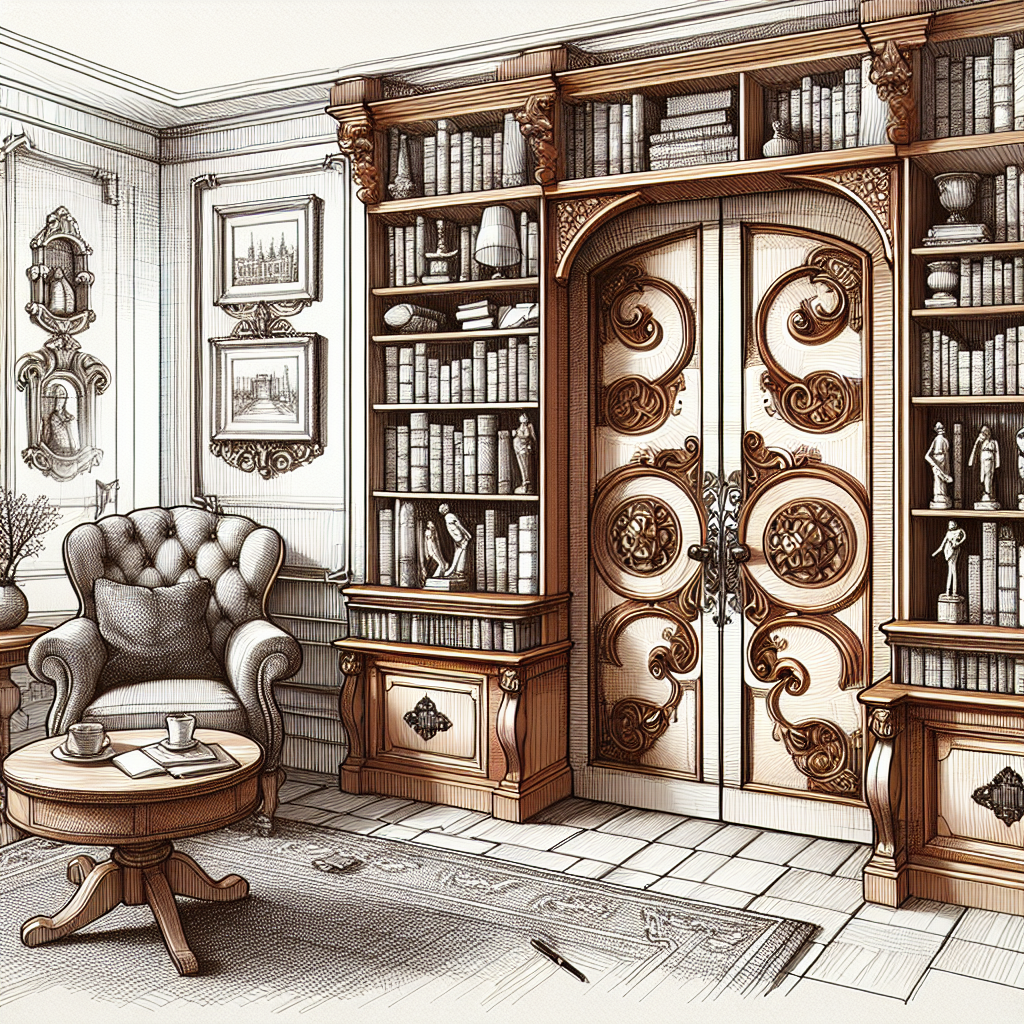
How to make a secret door
The Art of Concealment: Crafting Your Own Secret Door
If you've ever fantasized about having a hidden room or a clandestine passageway, you're not alone. Secret doors have fascinated people for centuries, often appearing in literature, movies, and even historical manuscripts. But creating a secret door in your own home is not just a whimsical notion; it can be a practical project that adds intrigue and versatility to your living space. Whether it’s for a hidden pantry, a discreet wine cellar, or simply a clever escape route, this guide will take you through the essential steps and considerations to bring your secret door vision to life.
Understanding Your Objectives
Before you jump into the design and construction phase, it’s important to clarify your objectives. Consider the following:
- Purpose: Why do you want a secret door? Is it for storage, aesthetics, or novelty?
- Location: Where do you envision this door? In a bedroom, basement, or perhaps concealed behind a bookshelf?
- Mechanism: What type of secret door mechanism do you wish to install? Examples include sliding doors, bookcase doors, or even rotating walls.
Design Considerations
Now that you have a purpose in mind, let's focus on the design aspects. A well-thought-out design ensures your secret door complements its surroundings and operates seamlessly.
Choosing the Right Materials
The materials will largely depend on the style of door you wish to create and the existing decor in your home. Common materials include:
- Wood: A classic choice for its versatility and aesthetic appeal.
- Glass: Enhances a modern look but may require careful framing to maintain secrecy.
- Metal: For a more industrial feel, metal doors can be both sturdy and stylish.
Style and Aesthetics
Your secret door should blend in with the surrounding environment for optimal secrecy. Here are some design ideas:
- Bookshelf Door: The most iconic choice; seamlessly blends with existing bookshelves.
- Panel Door: Alter existing wall panels to make a door without sacrificing visual appeal.
- Mirror Door: A reflective surface that can disguise a door beautifully.
Planning Your Space
Before construction, ensure the space you want to hide is suitably designed to accommodate a door. Here are steps to consider:
- Measure: Take precise measurements of the intended area to create an accurate blueprint.
- Clear the Area: Remove any obstructions from your designated space.
- Consider Accessibility: Ensure that your secret door can be easily accessed without hindrance.
Tools and Materials Needed
Here’s a basic list of tools and materials you might need to construct your secret door:
- Wood (or other chosen material)
- Hinges or sliding tracks
- Fasteners (screws, nails)
- Drill
- Saw (hand saw or power saw)
- Level
- Measuring tape
- Paint or finish (optional)
Steps to Building a Secret Door
With your plan set, let’s delve into the actual construction of your secret door. The general process can vary depending on the type of door, but here’s a structured approach:
- Construct the Frame: Use strong wood to enhance stability.
- Cut the Door Panel: Cut according to your measurements, leaving some allowances for the frame.
- Attach Hinges or Tracks: Depending on the type of door mechanism you selected, fix the hinges or install the sliding tracks.
- Install the Door: Position and secure the door in place while making sure it aligns properly.
- Finishing Touches: Paint, stain, or finish the door to blend with the surroundings.
Incorporating a Lock or Secret Mechanism
To enhance the secrecy of your newly crafted door, adding a discreet locking mechanism can be an excellent addition. Here are a few options:
- Magnetic Locks: These are invisible from the outside and can be manipulated with a hidden magnet.
- Keypad Entry: Modern solutions for a discreet and versatile locking mechanism.
- Pneumatic Locks: A little more complicated but can offer innovative opening methods.
Incorporating Lighting and Ventilation
Consider how to approach lighting and air circulation if your secret door leads to a concealed space. Here are practical tips:
- Lighting: Install hidden LED strips or wall sconces, ensuring they are unobtrusive.
- Ventilation: If needed, install hidden vents to maintain air quality in sealed rooms.
A Final Touch: Clever Markings
For those who wish to add an element of charm, consider how to mark your door subtly:
- Book Spines: If using a bookshelf, select books that visually align.
- Wall Art: Hang art that draws attention away from the door.
- Decorative Trim: Use trim that blends well without revealing its function.
Conclusion
Creating a secret door can be an adventurous project that enhances your home’s aesthetic while providing a sense of mystique. With careful planning, creativity, and a touch of craftsmanship, you can design a functional and beautiful hidden door that excites your imagination and adds a unique feature to your living space. So gather your tools, sketch out those ideas, and start building your hidden masterpiece!
```By Guest, Published on August 21st, 2024